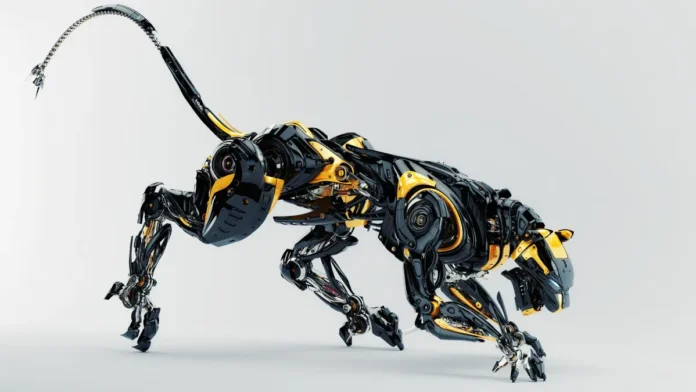Roboticists and computer scientists have long drawn inspiration from nature, and their latest creation—detailed in a recent paper from the Journal of Bionic Engineering—is no exception. This new robot utilizes piezoelectric materials, which produce an electric charge when mechanically stressed, to replicate the agile movements of a cheetah.
The device employs a voltage differential driving method to enable various types of motion, including straight-line movement and turns of different radii. The prototype, which weighs 38 grams and measures 150 × 80 × 31 mm³, is structured in an H-shape with four legs interconnected by three piezoelectric beams. These beams generate bending vibrations that imitate the cyclic leg motions observed in a cheetah’s sprint.
Researchers conducted a thorough analysis of the robot’s dynamics and kinematics, tracing the path of a point at the tip of one of its legs. They further explored the robot’s movement mechanics through modal and harmonic response studies using finite element analysis software. Their findings revealed that the robot can achieve a maximum speed of 66.79 mm/s at an excitation voltage of 320 V while carrying a load of up to 55 g. Additionally, they observed that an H-shaped design with legs driven unequally enhanced its ability to climb slopes, offering valuable insights into optimizing leg heights for piezoelectric robots.
One of the standout features of this new system is its simplified design compared to other piezoelectric-based robots, which often depend on complex wave propagation for movement. The adjustable voltage not only fine-tunes its motion but also alters its turning radius, providing a versatile range of movement options.
The initial prototype, which can support small loads, opens up possibilities for future enhancements. The design might soon incorporate miniature sensors or cameras, broadening its potential applications. In real-world tests, the robot successfully mimicked the running gait of a cheetah and demonstrated effective ramp-climbing across various angles.
Looking forward, the research team plans to refine the robot’s design further so that it can operate reliably in extreme temperatures, harsh climates, or dangerous environments. This could make it an invaluable tool for industrial tasks or search and rescue operations.





